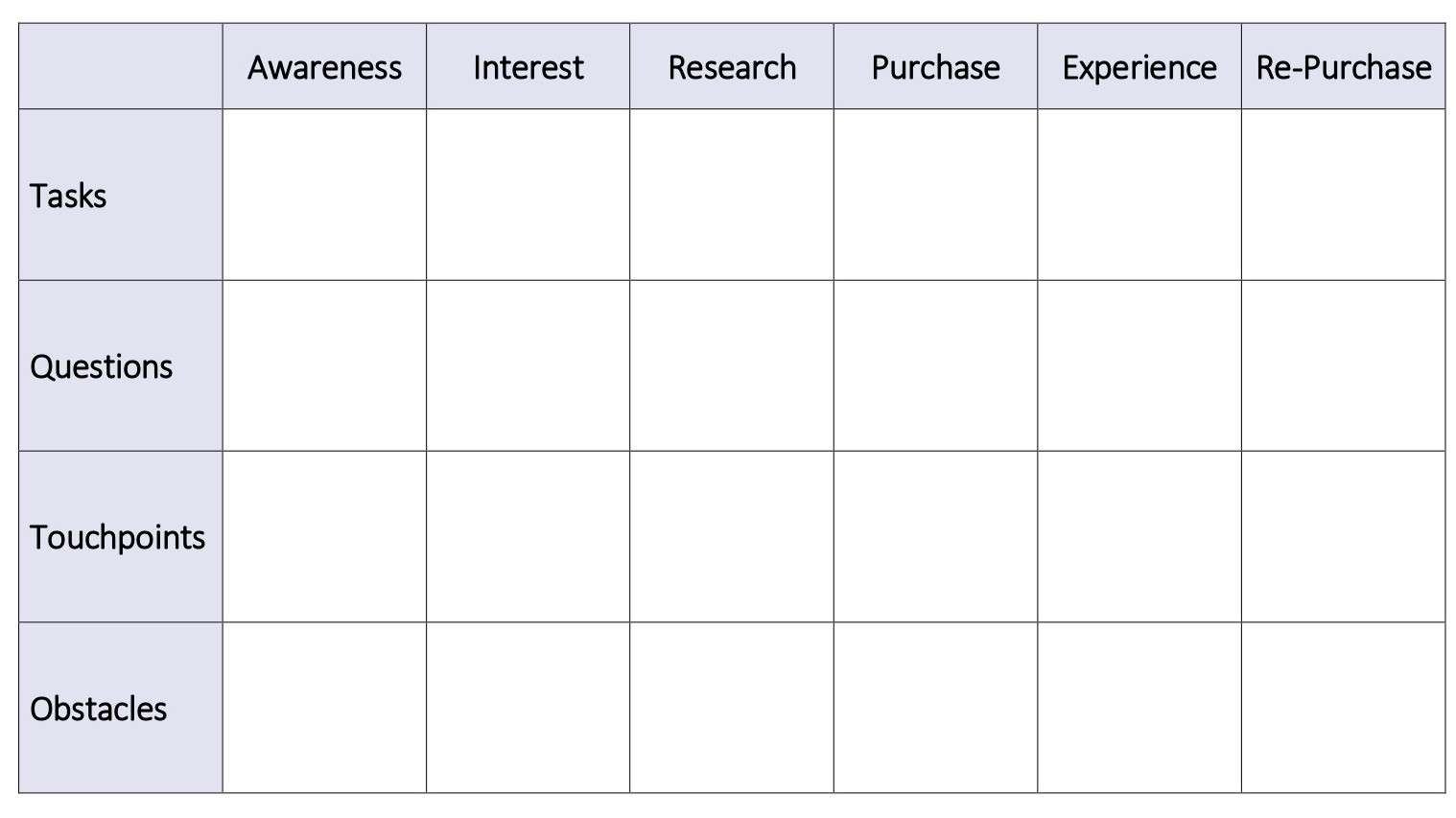Back to blog
4 MIN READ
The Perfect Customer Journey Map
PUBLISHED
13 May, 2019

Product Analytics Expert

“…maximizing satisfaction with customer journeys has the potential not only to increase customer satisfaction by 20 percent but also to lift revenue by up to 15 percent while lowering the cost of serving customers by as much as 20 percent. ” – McKinsey
What is a customer journey map?
A customer journey map is a visual representation which helps you to understand your customers, their needs, their hesitations, and their concerns. It uses visualization and storytelling to show the relationship between a customer and the company over time.
At first glance a customer journey is straightforward and simple: You offer a product and your customers make the purchase. But there is more! The customer goes through different stages before he purchases a product: Awareness, Interest, and Research. Even after the Purchase it isn’t finished. The customer makes his Experiences and probably Re-Purchase.
You can find a further explanation about the Customer Journey itself in this article: Customer Journey for Product Managers.
What is customer journey mapping?
First, I want to explain what customer journey mapping is not: It is not an accurate representation of every nuance of every customer’s experiences during his purchase journey. This would be impossible to represent!
It is the sum of typical experiences of your customers and helps to see the company from the customer’s point of view. Instead of just looking at the purchase, the customer journey map documents the full experience.
Customer journey maps are similar to personas. The difference is that a customer journey map focuses on the tasks a customer does and on the questions he asks. The customer journey map is not a snapshot. It expresses the customer’s experience and touchpoints with the company over time.
Why is customer journey mapping important?
The purpose of the customer journey map is to understand the customer’s needs, see the company from his point of view and to improve the quality of your customer experience.
See your business from the customer’s point of view
Understand what a customer needs to complete a purchase
See where the customer interacts with the company
Show the gaps between the customer’s expectations and the companies offering
Recognize touch points between the company and the customer
Help to enable a seamless experience over all touchpoints
Minimize negative customer experiences
How to create your customer journey map
There is no absolute right or wrong way to design a customer journey map. Every map looks different. From a complicated and detailed map to a simple description of tasks and critical touchpoints – everything is possible. Just keep in mind that your focus is on the customer’s needs and wishes.
Source: SD053: Figure 5.14 by Rosenfeld Media from Brooklyn, USA
At the beginning you should start simple, for example with a table like the one below or with a timeline, to research your customer journey map.


Tasks: Ask yourself what your customer is doing on each of the stages.
Questions: What is the customer’s mindset? What questions does he have and which answers does he need? Try to find out which information you can provide your customers to answer their questions.
Touchpoints: Touchpoints are all points where the customer comes in contact with the company. From your website to reviews and rankings on other platforms this includes every contact from awareness to re-purchase.
Obstacles: What kind of obstacles do customers have to overcome? Find out what could cause the customer to give up and not complete the purchase. Moreover, ask yourself how you could help him to overcome these obstacles.
Conclusion
A customer journey map is never going to be perfect, but it should be a representative visualization of reality.
A customer journey map is a visualisation that helps you to understand your customer needs, hesitations, and concerns. It shows the relationship between a customer and the company over time with visualization and storytelling. Furthermore, it helps you to see your company from the customer’s point of view.
There is no right or wrong way to design a customer journey map. Just start with a table or timeline.
Related Articles:
AUTHOR

Annemarie Bufe
Product Analytics Expert
Passionate hobby dancer. Working at UXCam.
What’s UXCam?
Related articles
App Analytics
Mobile App Tracking: Practical Guide & Best Tools [2026]
The best tracking tools for mobile...

Jonas Kurzweg
Product Analytics Expert
App Analytics
Top Analytics SDKs 2026
Pick the right analytics SDKs to improve your app's...

Jonas Kurzweg
Product Analytics Expert
Product best practices
8 Best UX Analytics Tools and Software We’ve Tested 2025
A good UX design is key when it comes to user satisfaction. Learn about five of the best UX analytics tools you can use to get valuable insights about user...

Jonas Kurzweg
Product Analytics Expert


